Sam Quinones's Blog, page 10
December 17, 2015
DREAMLAND, “Best of” lists, & New Rules for Authors
I don’t think I’ll have a nicer time, as an author, than I’ve had in the last few weeks.
For starters, one morning Entertainment Weekly selected Dreamland as among the year’s 10 best books (“like a David Simon TV Show gone cosmic”). That afternoon, Bloomberg Business ran a piece with Princeton Prof. Angus Deaton, Nobel Prize winner for economics, recommending the book as his favorite of the year.
Both ends of the culture endorsing a book on the same day – I don’t think that’s happened before.
I appreciated that because when I began this book I thought I was writing a drug-crime story. Midway through, I realized the book was really about where we are as a country, about what happens when, as a culture, we shred community, export our jobs, build isolation and call it suburbs, claw at government and forgive the private sector its trespasses, and exalt consumption and seek pleasure and call them happiness.
Heroin is simply the embodiment of values we’ve fostered for 35 years. Isolation is its natural habitat. Doesn’t have to be that way. The antidote to heroin isn’t naloxone; it’s community.
Anyway … I thought I’d write to suggest my book to those of you looking for Christmas presents.
I know, it’s hucksterism. But the rules for authors these days are:
1) Write like hell; 2) Rewrite always; 3) Read a lot; 4) Talk to lots of different people; 5) Pay attention; and 6) Always be branding, marketing and promoting yourself because if you don’t, no one else will.
So, given No. 6, I’ll just quietly let you know that, in addition to EW and Bloomberg, in the last few weeks Dreamland was selected in “Best Books of the Year” lists by … Amazon.com, Slate.com, the WSJ, Seattle Times, Boston Globe, St. Louis Post-Dispatch, and Audible.
Drug Czar Michael Botticelli named it his favorite book of the year – that was nice of him. So did the governor of Kentucky, Matt Bevin. Nice of the governor to do that, too.
You can see links to all this at my website.
Okay, so that’s done. Please have a happy holiday season, walk a lot, and take care of yourself and others you love.
The post DREAMLAND, “Best of” lists, & New Rules for Authors appeared first on True Tales: a Reporter's Blog.
December 4, 2015
In San Bernardino: A womb provides the perfect cover
So the woman apparently swore allegiance to ISIS on Facebook – that’s what AP and others report – meaning she viewed her womb as nothing more than cover. Staying in the US while deflecting suspicion – what better way than to have a child.
Meanwhile, Republicans are talking terrorism. Democrats talk guns.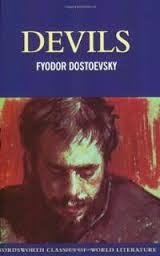
Both are right.
As this case unfolds, it seems to have more to do with fanaticism than anything else. The real question is, as this fanaticism spreads, should we be complicit in our own demise?
The ISIS connection, I guess, now doesn’t surprise me. This couple clearly had been planning some attack, given all the ammunition (thousands of rounds) and tools they possessed to make a dozen pipe bombs. So her entry into this country should only be viewed with suspicion.
Then, within a few years of returning from Saudi Arabia (home of Wahabi fanatics and the oil that we are addicted to), they’re married, with an infant daughter and, after much late-night work, they choose a holiday party of county employees a few weeks before Christmas to go off, kill people and leave their daughter an orphan.
All of that reeked with something more sophisticated than the typical insane killer a la Tucson or Aurora.
But the guy was a U.S. citizen, mild-mannered, county employee, from a family of at least one decorated US Navy sailor. How many of those are there in our country? Millions.
The question is: How easy are we making it for terrorists to do their job when someone can buy these kinds of assault weapons? That someone bought them for them is no surprise. This kind of straw purchase takes place at Arizona gun shows all the time. L.A. street gangs get their weapons this way, too.
Why is that an easy thing to do? That should not be easy – I see no reason why it should be legal in most cases at all. These guns are designed for the simple mowing down of people. Nothing else. Why don’t we know where each of those guns is and who owns them?
Senate Republicans just voted en masse against a bill that would have prevented the sale of arms to people on the FBI’s terrorism watchlist. That seems irresponsible. Particularly as they don’t appear to have any other solution to this problem, other than the mass arming of every American, a fanatical idea itself, it seems to me.
That is their final solution: A garrison state outside every holiday party and keeping the world out of the country.
Given Paris, Colorado Springs, South Carolina and now this, we are confronting something that combines classic political fanaticism with run-of-the-mill insanity. Mixing one more than the other, depending on the 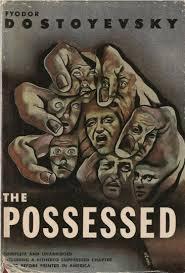 case.
case.
Dostoevsky had some things so say about that in his novel, The Devils, also known as The Possessed – an 1872 novel increasingly relevant to our times. It’s the denial of the individual, of one’s own existence, doubts, intellect, love and connection to others — all that prostrate before some perceived higher cause. At the same time, it’s an attempt to shred, destroy community, the public coming together of human beings.
Southern California has seen this before. The best example I’m aware of is in our street gangs, where nothing short of a brainwashing occurs in kids in their teens, teaching them that their 12-square-block area, their clica, is worth you dying or going to prison for. Hence, they dominated parks and street corners and didn’t pay too much attention to where their bullets flew. Saw that many times.
Heroin addicts display these brainwashed characteristics in devotion to their dope, I’ve noticed.
We saw it, too, in Colorado Springs or South Carolina, where loonies were killing for what they perceived was some higher cause. Even the Tucson guy, who was out of his mind, had some higher calling in mind, even if he couldn’t articulate it in a way any of us could understand.
In San Bernardino, the fanaticism is especially pronounced, of course. Even a womb was employed in its furtherance.
The guy now seems a toady in comparison with the blind devotion of this woman he married – though we can only take that verb with a grain of salt.
What gives greatest pause is the couple’s target. Unlike the targets of previous killings, it’s unclear what a holiday party of county employees has to do with the larger goals of ISIS. Unless, of course, it’s simply to kill the way Americans live, the openness with which we conduct everyday life.
Any target is fine – place or human. That seems the clear conclusion here: sowing fear, shredding community, isolating us from each other.
Question is, then: Given that keeping that attitude out is almost impossible, are we going to be complicit in our demise?
The post In San Bernardino: A womb provides the perfect cover appeared first on True Tales: a Reporter's Blog.
December 3, 2015
A Victim List in San Bernardino
A list of victims in San Bernardino reads like the wondrous cross-section of America that makes this country such a beacon to the rest of the world, so threatening to fanatics (foreign and domestic), and which is under attack by these now daily shootings everywhere.
They were Vietnamese, Latino, white, black, Jewish, Christian, gay, straight. One guy dressed as Santa Claus every year, another guy who trained autistic kids to work in the cafe in the center where this happened and volunteered for the Renaissance Faire every year.
“Faire teaches us that everyone’s ideas are valid,” one man who knew him told the LA Times. “It gives us a greater understanding of each other and the world in general.”
Quite. The antidote to fanaticism is the Renaissance Faire. I buy that.
Which makes it hard, painful to watch the details of who these people were come out.
Meanwhile, this story continues to mess with our conceptions, including my own.
I’ve covered several of these and I always expect the shooters to be white American men, because so many of them have been.
This time … a mild-mannered US-born killer of Pakistani extraction, living in SoCal suburbia, perhaps radicalized by a trip to Saudi Arabia (What a surprise! When do we wean ourselves from the oil this country controls?). There, he got engaged and somehow got his woman into the country, where she was next seen shooting it out with cops Bonnie and Clyde style after killing and wounding people at a holiday party.
And his brother was a decorated US Navy vet.
Still my question is: Who has a daughter six months before and decides then that today is just a great day to leave her an orphan? And why/how would you come to that conclusion?
And then why would you think that killing people you work with, who just months before had thrown you a baby shower, is the answer to your torments? If terrorism is your goal, how does taking out a holiday party in San Bernardino, far in every way from power, fulfill it?
Clearly he wasn’t insane, in the way that the South Carolina guy or Tucson or Aurora guys probably were. They were obviously planning something for a long time, with that much ammunition and weaponry on hand – all with an infant in the house. 12 pipe bombs, thousands of rounds of ammunition.
Of course, religious fanaticism is one of the few things that will deny the parenting instinct. So maybe that’s it. Saw a similar kind of fanaticism in Colorado Springs last week.
The post A Victim List in San Bernardino appeared first on True Tales: a Reporter's Blog.
November 18, 2015
The Dayton Heroin Bust
Cops in Dayton, Ohio this week took down a reputed major Sinaloan trafficker, along with a bunch of cash and a million dollars worth of dope.
What this bust shows is that the larger Mexican cartels, which for a long time ignored heroin as a revenue generator, have in the last few years figured out the new market that exists in the U.S., created by the overprescribing of narcotic pain pills nationwide, and shifted priorities.
Through the 1990s and into the last decade, these cartels didn’t dabble too much in heroin. Other drugs were more popular and profitable. Plus, in Mexico heroin is viewed as about as scuzzy a thing as it in the United States.
That’s changed in the last few years. Mexican cartels, which already dominated on the western side of the U.S., have recognized the widespread opiate addiction among Americans and moved to take control of the markets on the eastern half of the U.S. that once were served mostly by Colombian heroin traffickers back to the 1980s — the same way Mexican cartels wrested the cocaine market from the Colombians in the 1990s.
Pills to heroin to Mexican drug cartels in areas that never had much of any – all in the space of 15+ years.
The post The Dayton Heroin Bust appeared first on True Tales: a Reporter's Blog.
November 17, 2015
A Mother’s Story: Sam Chappell
Your book, Dreamland, does an excellent job of outlining how the convergence of the pharmaceutical environment with heroin trafficking from Mexico over the last two decades provided the avenue for the addiction that killed my son. I believe his story is the third leg of your book.Sam Chappell
Sam was born in 1994. The next year, OxyContin was approved. Sam was a sweet toddler when Purdue began its aggressive and misleading marketing campaign for the drug. Meanwhile, Sam’s dad was writing a masters thesis on heroin production in Colombia — it was becoming so pure, he pointed out, that it could be snorted or smoked, avoiding the stigma of needles and making its way into the mainstream.
By 2000, when Sam was six and entering first grade, revenues from OxyContin had quadrupled. The initial 80 mg pill had given way to a 160 mg pill to account for increasing tolerance among patients. Purdue’s sales force had doubled and salespeople were receiving annual bonuses of $70,000 and above.
In 2001, when Sam was seven, Purdue was spending $200 million in marketing and had pinpointed doctors who tended to prescribe lots of pain medication for aggressive marketing campaigns. Sam began to face some bullying in school.
By 2002, Purdue knew of doctors who were recklessly prescribing its drug. Sam continued to struggle to fit in at school. It began to affect his mood and motivation.
Between 1999 and 2010 (the year Sam turned 16) Oxycontin prescriptions and overdose deaths quadrupled. Swapping pills became the new form of partying in the schools. Sam found a way to fit in and feel good all at once.
Meanwhile, heroin from Mexico had been making its way north, poised to fill the gap when opioid pharmaceuticals became harder and more expensive to obtain. Sam found his way to that solution.
My beautiful and beloved son, Samuel Logan Chappell, died of a heroin overdose in Columbus, Ohio, on Sept. 7, 2015.
Nancy Chappell
The post A Mother’s Story: Sam Chappell appeared first on True Tales: a Reporter's Blog.
November 14, 2015
La Marseillaise – Casablanca
The post La Marseillaise – Casablanca appeared first on True Tales: a Reporter's Blog.
I Love Paris – Ella Fitzgerald
The post I Love Paris – Ella Fitzgerald appeared first on True Tales: a Reporter's Blog.
November 13, 2015
Forcing Pharma to Pay To Take Back Drugs
The Los Angeles County Department of Public Health is today holding hearings on a proposal that would force pharmaceutical companies to pay to “take back” their drugs and needles that are not used by consumers.
Los Angeles County is following the lead of Alameda County in northern California, which enacted an ordinance requiring pharmaceutical companies to provide funds to collect and dispose of unused pills. The ordinance survived Supreme Court review last spring, and is now in place under the concept of Extended Producer Responsibility (EPR).
According to the L.A. County department’s website, “EPR is an environmental protection policy approach that recognizes the responsibility of a manufacturer or producer of a product to steward that product through the post-consumer stage of its lifecycle.”
This has become an issue due to overprescribing of addictive narcotic painkillers over the last two decades – often following routine surgeries. Frequently patients are prescribed 60 or 90 Vicodin, Percocet, or Oxycontin pain pills, of which they often use only a small fraction, leaving the rest in their medicine cabinets. Many of those pills have been discovered by kids in the home, their friends, by workers doing jobs at houses, or otherwise entered the black market.
These overprescribed and unused pills have added enormously to the street supply of pills and are a large part of why the country is in the midst of an unprecedented scourge of opiate addiction.
Profits from the sale of these pills have accrued to pharmaceutical companies, while the costs of dealing with that addiction have been borne by taxpayers – cities, counties, jails, coroners, police and public health departments.
One response has been Drug Take-Back days, which have spread nationwide. In 2014, 5 million pounds of drugs were taken back during these events nationwide, according to the National Safety Council. (LA County’s interim health director estimates some 200 million pounds remain of these drugs remain in medicine cabinets around the country.)
Of course, the problem is who pays to take back these drugs, and to then dispose of them. Up to now, again, public agencies, typically cities, counties or the DEA, have foot the bill.
The move to push pharmaceutical companies to contribute is new. Counties and cities across America might want to look into this new kind of ordinance as they cast about for ways to pay for taking back the enormous quantities of highly addictive painkillers still out there.
The post Forcing Pharma to Pay To Take Back Drugs appeared first on True Tales: a Reporter's Blog.
November 8, 2015
In Nashville searching for a pedal steel
Now that they’re dead, George Jones and Johnny Cash have been allowed back into Nashville.
Each man now has a museum in his honor, I discovered as I walked up and down Music Row in Music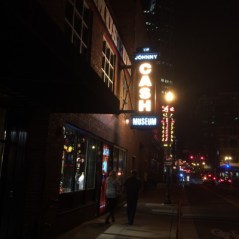 City.
City.
I’m in Nashville at the invitation of Prof. Ted Fischer and Vanderbilt University’s Center for Latin American Studies to give some talks about heroin and pills.
Nashville’s a great town. First time I visited, in 2001, also at the invitation of CLAS, I spent time at a West Nashville apartment complex watching Sudanese Lost Boys and Bosnian immigrants play soccer. The town has the largest Kurdish population in America, and had 80,000 Mexicans as well. That night, I went to a Mexican circus – Los Hermanos Vasquez.
And it’s got country music.
I’ve been a country fan since I was about 16 and my guitar teacher started playing me some Merle Haggard and Emmylou.
Johnny Cash and George Jones have been my favorites for so many years. These two guys had voices like oak trees. They shared a lot in common, I thought, with jazzman Sonny Rollins, whose saxophone had the same kind of sound. But neither Cash nor Jones was much appreciated by Nashville’s new pop-rock country, big-hat-boys sound toward of his life. Cash didn’t even have a record deal. Sorry state of affairs for two of the greatest singers we Americans ever produced.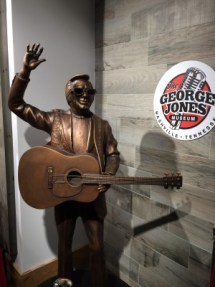
Problem is, from the radio, I gather that there isn’t much about current Nashville country music that would have room for either man if he were starting out today.
In fact, as I walked up and down Music Row in Nashville, I searched in vain for what I consider to be the soul of country music: a pedal steel guitar.
Pedal steel is what makes country music sound so sweet; the instrument sounds a lot like the voice of Emmylou Harris. I’m told that Ms. Harris, my personal country music goddess, doesn’t listen to new country music any more. Maybe it’s because they’ve done away with the pedal steel guitar, I thought as I walked down Music Row. Pedal steel also makes country music sound raw sometimes, too, and I like that.
Walking down the Row, there was a lot of what I took to be rocknroll. I heard some Michael Jackson. I heard some Eagles and was going to call the Chamber of Commerce to complain. I had dinner in George Jones’ Museum and Restaurant and ate three scallops that cost me $11 per scallop, but I didn’t find any pedal steel guitars in there.
I peered inside Margaritaville, but all they had was a rock band. Same with the place next door. No pedal steels.
I did happen in to Ernest Tubb’s Record Store, where I found CDs for $2.99 each in the bargain “tubb.” I bought five, including a compilation of truck driving songs, with some frantic pedal steel picking, called Lay Me Down a Truck Driving Man. Jewel of the CD was Mac Wiseman’s song, “Eighteen Wheels Humming Home Sweet Home.”
Raindrops on the windshield
Teardrops on my steering wheel
This old truck’s the only thing I own.
My old heart is pining
While her old engine’s whining
And eighteen wheels humming Home Sweet Home
From poetry like that you can see why I thought the CD would be the night’s highlight.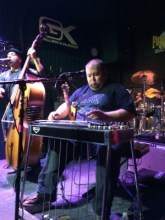
Then I stumbled into the Full Moon Saloon. On the stage was a bar band and in the band was Mike Bourque. He was sitting with a Telecaster in his lap and a pedal steel before him, burning holes through songs with both instruments. So there I stayed until they stopped playing. Don’t know who Mike Bourque is, but he sure can play.
I guess this is where the real heart of Nashville music resides, not so much on those radio stations.
So I’ll leave you with Mike Bourque, on Telecaster and (briefly here) pedal steel blazing through the last three minutes of Merle Haggard’s “Honky-Tonk Nighttime Man.”
The post In Nashville searching for a pedal steel appeared first on True Tales: a Reporter's Blog.
November 6, 2015
Thank You!
The last few days have been tumultuous for my family and me – and filled with strong emotions.
But I wanted to say how much I appreciated all those who wrote in, via various media, with kind words, words of support and encouragement. Tens of thousands read the blogpost below. Thousands of people shared the post below on Facebook. Hundreds more tweeted it. I received many e
mails, and (now that my WordPress comments section is fixed) comments on my blog. Many folks wrote in on the 60 Minutes website and the show’s Facebook page to object.
It means so much that you would do that. Thank you!
“People can see the truth,” said one editor and friend. I think that’s probably right.
Journalists and writers sent me notes with their own tales of how 60 Minutes and other shows had taken their stories/books/articles/reports and redone them without giving credit.
“This has been going on for years,” said one.
Maybe, but that doesn’t make it right. I hope writers/reporters will speak up when this happens in the future.
I hope my public objection, calling them out, means that shows like 60 Minutes will think twice before it appropriates the work of others without giving them credit. Television in particular seems afflicted with the weakness for taking the stories of others.
To those who would do that, I say, fine. Just give credit. It’s common decency. Show the work the real reporters did. Show respect. Don’t pretend, as 60 Minutes did so brazenly, that you’re blazing some new trail.
All that show had to do was mention my name, my work, my book, and that I did indeed help them.
That seems unlikely now, given the comments of the show’s spokesman. Let me say for the record: I spoke up not to promote my book. I spoke up because I had to defend my work. Because if I didn’t defend my work, no one else would. I spoke up because this was work that 60 Minutes had not done by themselves. I had and I did it when almost no one in the media cared about this issue; early on, some questioned my judgment for even getting into the topic. Who cares about heroin addiction?
I spoke up because we’re in a new world, where if you want to do good journalism you almost have to go independent. And if independent journalists are routinely, and with impunity, scavenged by predators without the interest or energy for doing the work themselves, then we are doomed.
I spoke up because 60 Minutes, while taking what I’d taught them in phone conversations and in Dreamland, displayed no interest in advancing the story, taking it new places, teasing out new angles. None of that. Just the “Cliff Notes,” as one retired cop told me, to my book.
After 30 years in this business, three books and more stories than I can count, I’m accustomed to seeing stories that I scooped get picked up by other news outlets. I barely flinch. It’s part of the job. It’s even happened with many news outlets since Dreamland appeared. Everyone seems to be talking about the heroin epidemic in the last six months. That’s great, and one of the reasons I wrote the book.
I called out 60 Minutes because it was such an egregious violation.
They could have gone anywhere in the country and done this story. You’d have to ask them why they didn’t. I suspect they went to the place I told them to go (on the phone and in an email) and where a major part of Dreamland was set – Columbus, Ohio – because it was cheaper to do it that way, with the roadmap I provided them.
The night of the show, I was proud of the parents who were interviewed, several of whom I know. They spoke for millions of mothers and fathers like them across the country who have suffered this nightmare of watching their kids transformed into a something like zombies under the influence of pills and now heroin. They pushed along this awakening regarding the opiate epidemic that has been gaining strength across the country in the last six months.
But I also found myself dumbfounded, then outraged as I watched, remembering all the work I’d put in on this topic, the time I spent away from my wife and daughter – all of which 60 Minutes just appropriated as if it belonged to them. After it was over, I apologized to my daughter for my outbursts during the show.
“You don’t have to be sorry, Daddy,” she said.
So I’m not.
But I am grateful. Thank you!
The post Thank You! appeared first on True Tales: a Reporter's Blog.




